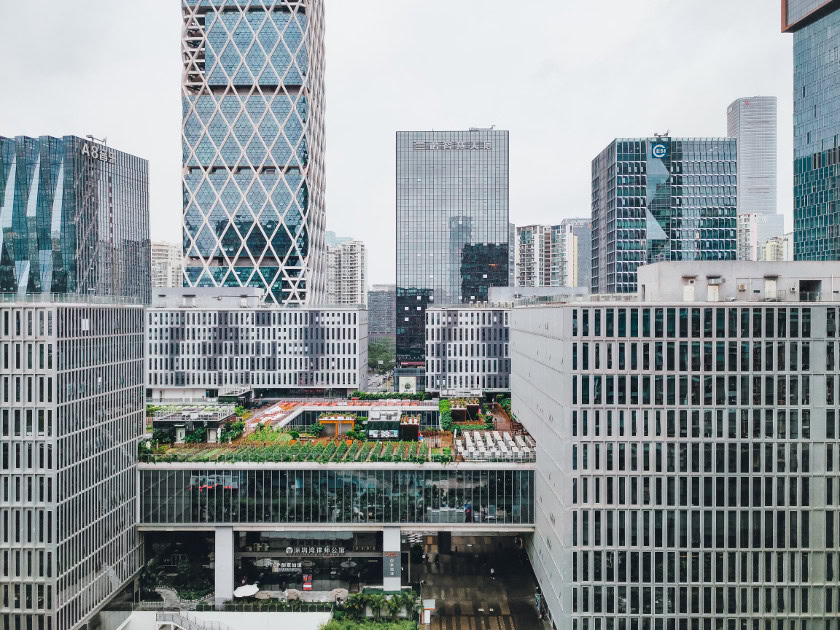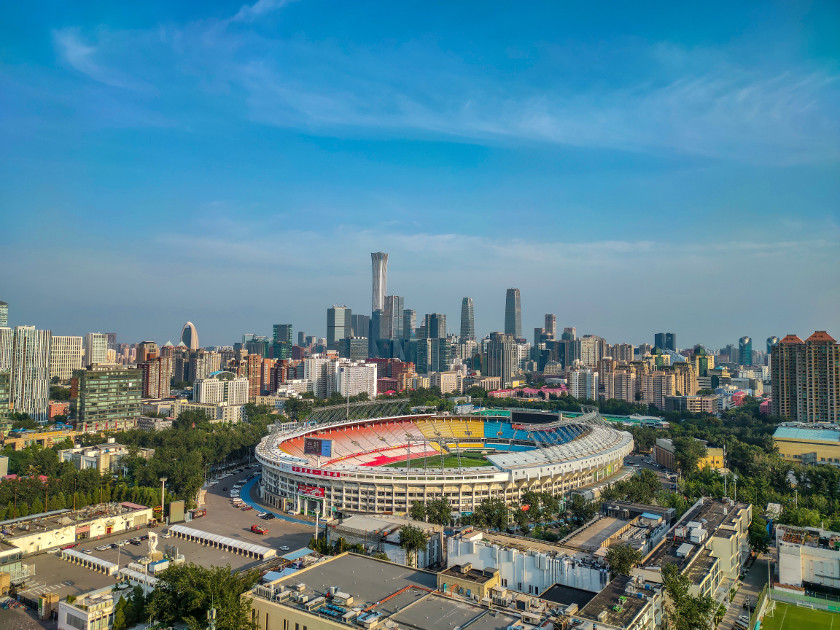Affiliate links on Android Authority may earn us a commission. Learn more.
Don't fall for the 100MP camera hype
Published onAugust 12, 2019
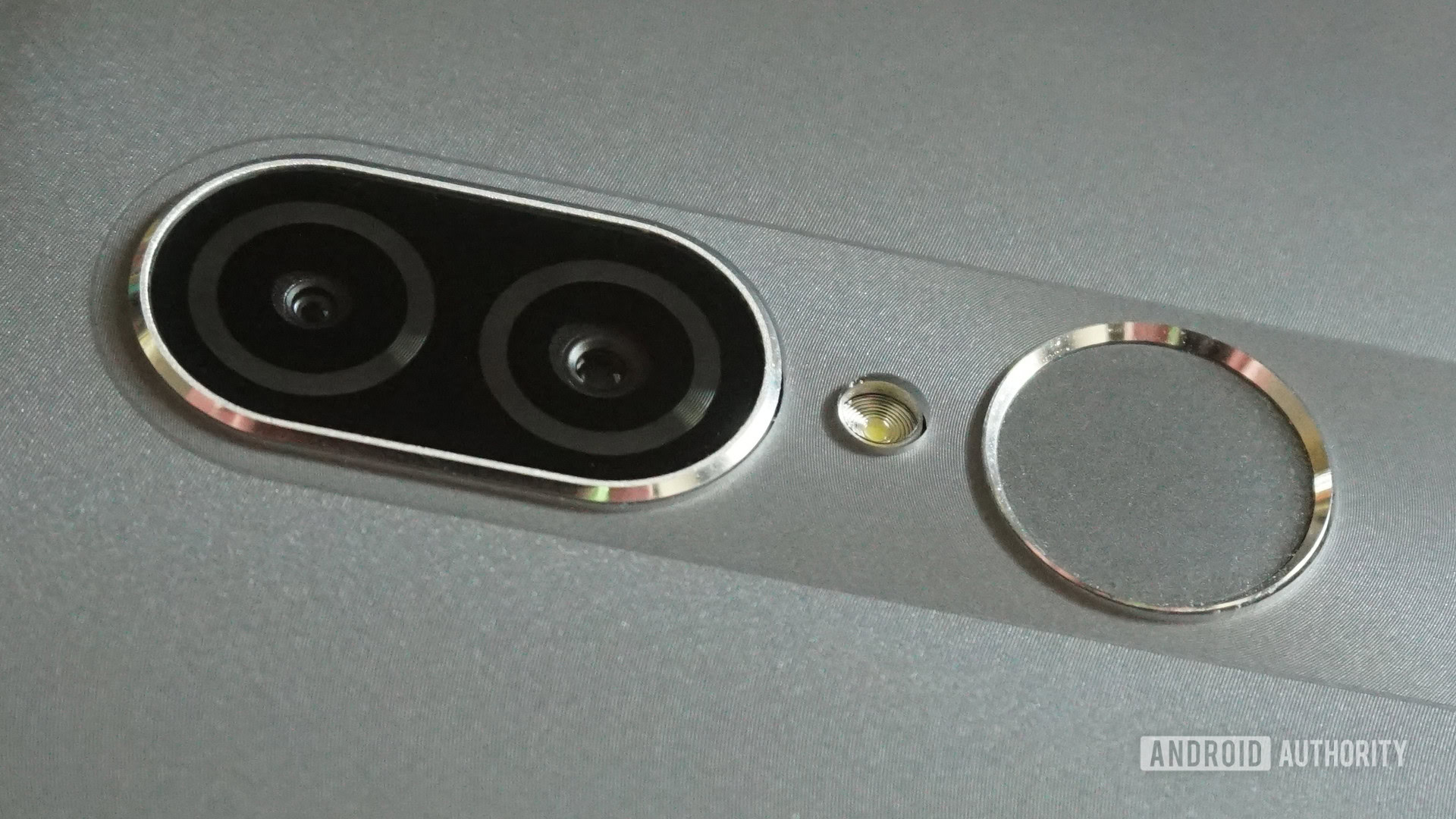
High-resolution smartphones cameras are reasonably common these days, even at mid-range price points. But the popular 48MP camera could soon be replaced by even higher resolution sensors. Xiaomi is promising a 64MP camera phone right around the corner, with a 108MP model in the works as well. That’s 12,032 x 9,024 pixels crammed inside a smartphone.
However, megapixels aren’t everything when it comes to camera quality. In fact, it’s a small cog in a much bigger machine. See the exceptional quality of the Google Pixel 3’s 12-megapixel camera versus the inconsistent 48MP OnePlus 7 Pro.
High-resolution phone cameras are constrained by the size, layout, and the isolation of the photosite pixels. There’s also software post-processing and the quality of the camera lens to consider. These are still areas that smartphones struggle with much more than their DSLR siblings and should give us pause for thought before we fawn over 64 or 100MP cameras too soon.
Megapixel counting basics
The small height and area profiles available inside smartphones limit the size of camera sensors. As a result, very high megapixel phone camera sensors sport very small pixel sizes. 0.8-micron (µm) is very common, while lower resolution sensors such as the Pixel 3 sport larger 1.4µm pixel sizes.
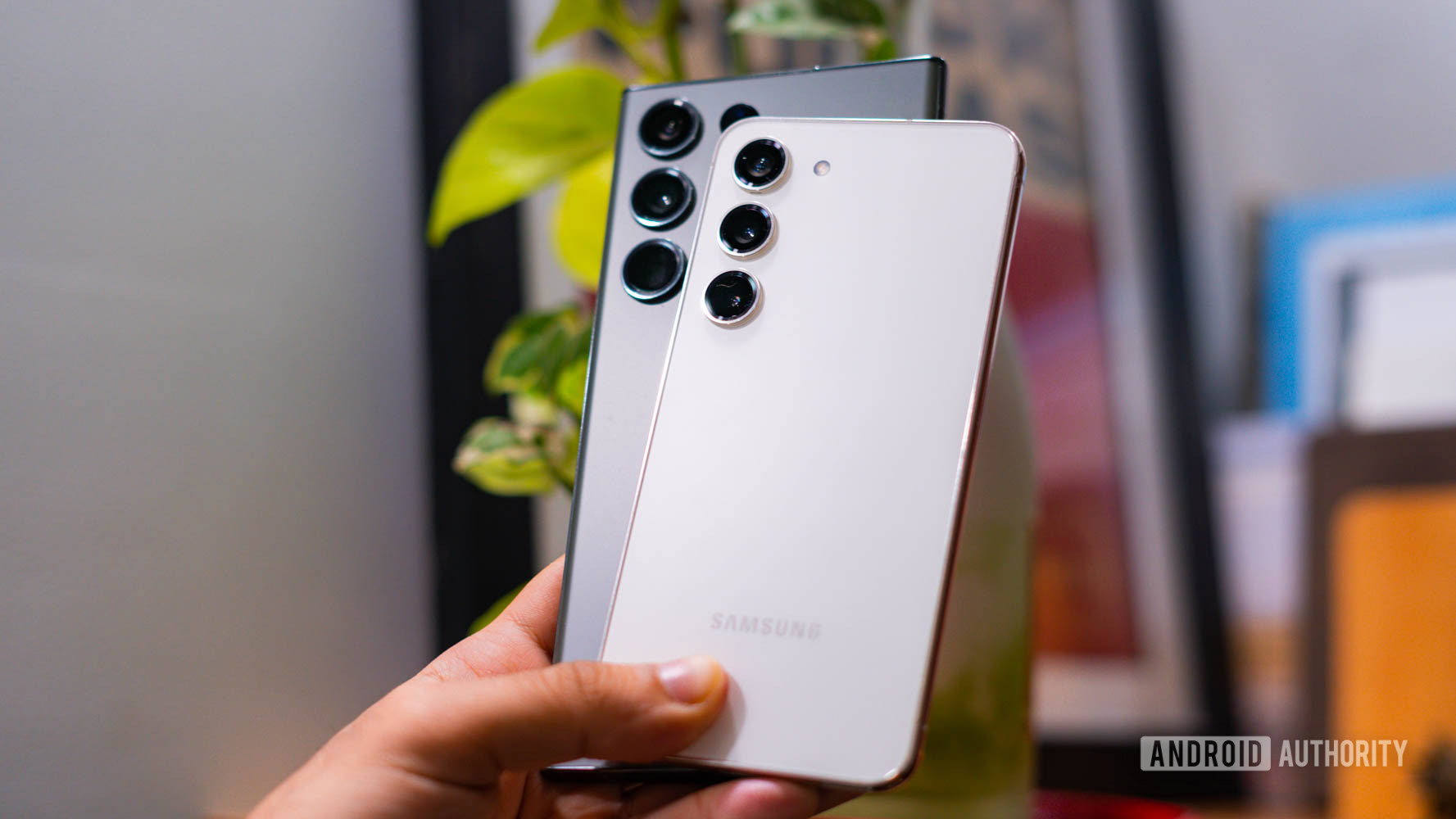
The key point is noise and crosstalk between pixels increases with smaller pixel sizes. Dynamic range also decreases due to lack of light sensitivity. Smaller pixels capture less light than larger ones, resulting in worse low-light performance. The walls between pixels are also incredibly thin with wiring in very close proximity too. This increases the risk of cross-talk between cells, which increases noise. Sensors have improved in this regard, with Samsung’s Isocell technology helping to address this problem somewhat.
Still, small high-resolution sensors typically suffer from worse performance than lower resolution sensors of the same size. To make up for their poor low-light performance, modern cameras have turned to a technology called pixel binning.
Smaller pixels lead to more issues with noise and dynamic range.
Pixel binning fudges the numbers
Tiny smartphones sensors must contend with the limits of submicron pixels and the implications for noise and low-light performance, as well as consumer desire for improved detail. The results are image sensors that support pixel binning, offering the best of both worlds.
These cameras don’t make use of traditional Bayer-filters to filter color into the sensor’s pixels. Instead, these sensors use quad-Bayer filters, where four pixels are covered by a single color filter. This produces just 1/4 the color resolution, but close to a full resolution of light sensitivity. Imaging algorithms enable switching between pixel binning or an approximated high-resolution shot.
Samsung’s 64MP GW-1 sensor calls this Tetracell technology. The company uses re-mosaic algorithms, combined with a super-resolution technology, to produce high-resolution shots while pixel averaging improves low-light shots.
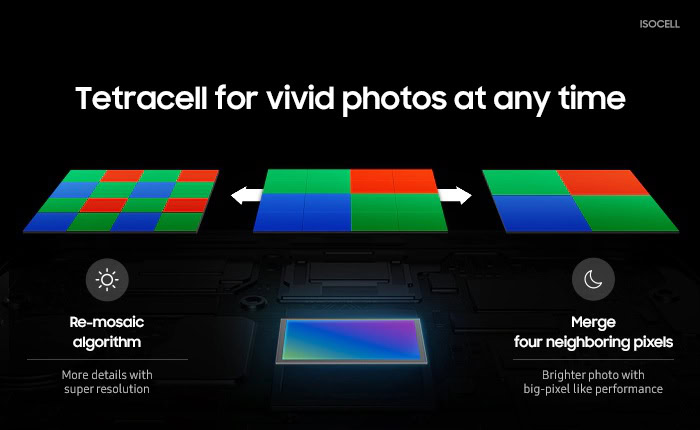
This is definitely not equivalent to a full resolution Bayer-filter sensor. The GW-1 provides just 16MP worth of color data, with some extra contrast data. The re-mosaic algorithm will pull out slightly more detail than a regular 16MP sensor, but certainly not anywhere near proper 64MP worth of detail.
In our experience, the level of detail when switching between pixel binning is not huge. Many phones, such as the Redmi Note 7 Pro, actually perform better with pixel binning left on. This is due to the superior light capture performance and because the re-mosaic algorithm produces so-so results. For this reason, manufacturers often default to pixel binning rather than giving users high-resolution pictures.
Quad-Bayer sensors are not equivalent to full resolution Bayer-filter cameras.
On-paper versus real resolution
We’re gradually piecing together the fact that the resolution listed on a camera spec sheet may not actually represent the level of detail you see in the final product. There’s one final key component to this picture — the relationship between lenses and resolution.
The camera lens is responsible for focusing light on the camera sensor, producing an Airy disk or focal area of a specific size that lands on the camera sensor. The size of the Airy disk defines how diffracted photons will fall on the image sensor as they pass through the lens. An Airy disk size that covers multiple pixels results in a loss of sharpness and detail. In other words, a poor quality lens reduces the resolvable resolution of the image sensor.
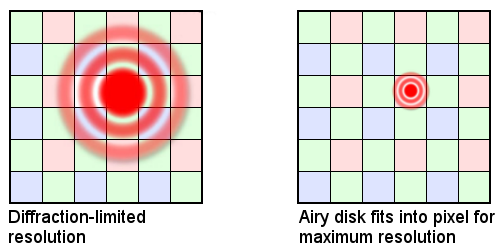
Small camera sensors are more diffraction-limited at larger aperture values. So smaller sensors not only require wider apertures to allow more light to reach the tiny pixels but also to ensure light can be focused with enough accuracy. Unfortunately, wide-aperture smartphone lenses are very difficult to construct without introducing new lens aberration distortion issues.
Wide apertures require extremely good lenses to resolve high-resolution details for small sensors.
One last point to consider: 100MP sensors will be larger than today’s sensors, widening their field of view. Smartphones already have quite wide fields of view due to the close proximity between the lens and sensor. Preventing any further widening and the associated lens distortion issues requires a longer focal length, which increases the lens’ depth of field effect. Combined with a wider aperture leaves a smaller area of perfect focus for your shots. That’s OK for portraits but not so good for the landscape shots where huge resolutions are most beneficial. Alternatively, we may see phones use larger crop factors to cut out lens distortion, therefore throwing away many of these extra pixels.
The bottom line is that 100MP smartphones can’t have their cake and eat it in a traditional smartphone form factor. There are size, lens quality, focus, and field of view issues to deal with while only providing questionable benefits to real resolvable resolution.
Realme’s 64MP camera — an early look
Enough with the theory, let’s look at some actual pictures. realme shared a couple of full-resolution sample images from its upcoming 64MP phone (via The Verge). Click on the following links to view the full image. Be warned that these are a hefty 41MB and 46MB each in size.
The samples look fantastic at full-frame, but let’s crop in to see exactly how crisp and clean the details are. Remember, there’s no point to these huge image files if the smallest of details aren’t resolved by this 64MP camera.
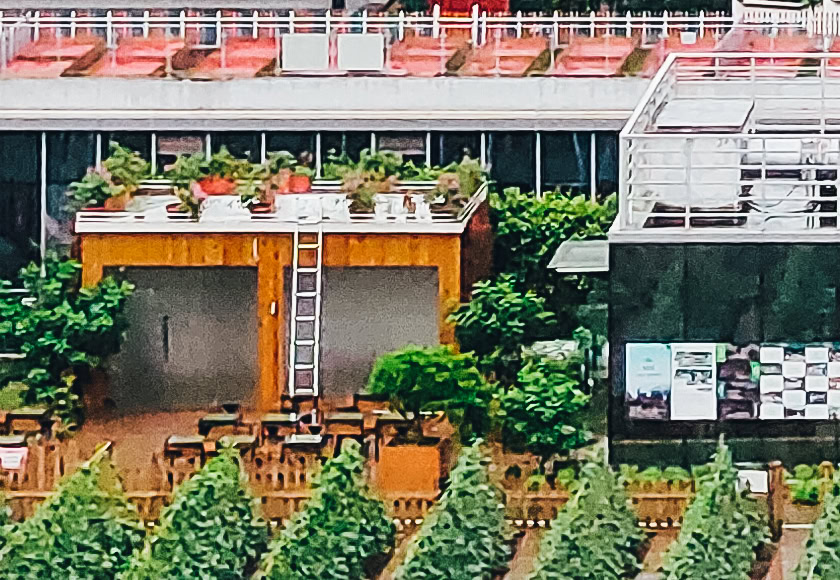
The 100% crop from the first shot highlights exactly the type of issues we’ve covered in this article. There’s a heavy amount of noise on a number of surfaces, particularly in the space behind the ladder. Any sense of depth is completely gone from that area.
To counteract this issue, there’s heavy use of denoise which produces the color smearing, particularly on the plant textures. There’s also a heavy sharpening pass which produces a halo effect around the edges of the ladder and fences. While it’s a fair attempt to give us a nice image to zoom in on, fine details are almost completely missing.
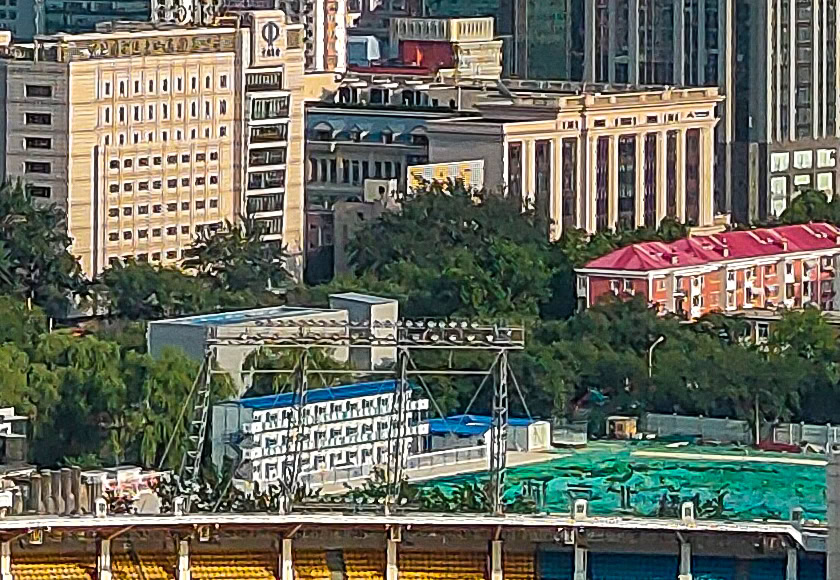
It’s a similar story in this second example. The hard lines on the buildings again highlight the oversharpening and denoise issues. In this shot though, there are clear artifacts from the re-mosaic algorithm too. It’s not clear what the blue smudge behind the stadium is supposed to be (probably a swimming pool?) but note the oil painting-like effect in that area, where details are blurred and smushed together from the post-processing passes. Again, the trees, balconies, windows, roofs, and pillars can be made out OK, but the fine details can’t be made out. A quality high-resolution zoom produces a much softer, more realistic looking image.
Image processing may improve as realme finetunes its smartphone, but there’s only so much that can be done. At best, this camera might provide decent 16 or maybe even 32MP shots, but it’s clear that 64MP of lossless quality is not achievable. Of course, few cameras ever look completely clean at a 100% crop, but for comparison here’s my inexpensive Nikon D3300 at 100% from its 24MP sensor.
That’s quite the difference in image presentation. It’s clear that a 100% crop from this entry-level DSLR is far more usable than the 64MP cropped realme samples.
Pros and cons of 100MP phones
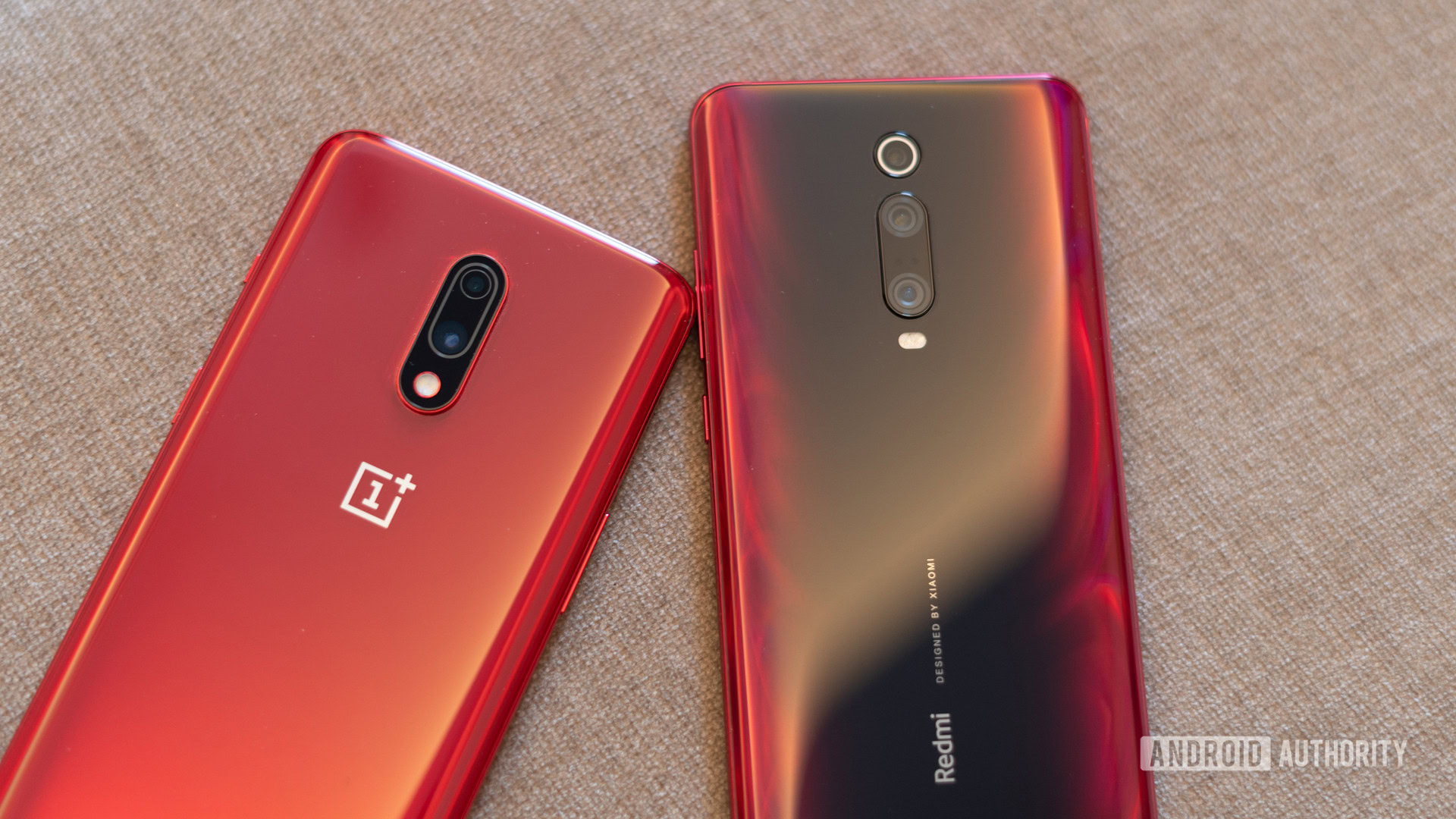
It’s easy to play the pessimist with new technologies. Many of the potential drawbacks mentioned above depend on how these super high-resolution sensors are implemented. Samsung’s 108MP sensor boasts a large 1/1.33-inch sensor size with 0.8µm pixels. This hopefully means noise performance won’t be any worse than current sensors and the big sensor should capture plenty of light for pixel binning.
High-resolution cameras can be a boon for zooming in or creating large details prints. Samsung and Xiaomi have boasted of 2x zoom capabilities while still retaining a 27MP image. That sounds pretty good and means telephoto lenses could be reserved for longer distance zooming at 3x or 5x, in the style of HUAWEI.
The real issue is that it seems unlikely, at least to me, that smartphone camera lenses will be able to resolve close to the full resolution of these sensors. Image detail capture won’t be close to the suggested megapixel count, owing to the use of quad-Bayer filters and diffraction-limiting lenses. The early 64MP realme pictures confirm my fears. Meanwhile, 100MP cameras require even more image processing and power consumption — not to mention the potentially huge file sizes.
These sensors help advertise a smartphone with a high pixel count and bigger pixels, but they're really neither.
It’s more likely that manufacturers will use these sensors to produce good looking, lower resolution images. We’ve already touched on pixel binning for low light. Manufacturers could also use oversampling and downsampling algorithms to reduce the aforementioned resolution artifacts while still producing detailed looking daylight shots. Just not at full resolution.
Ultimately, these huge megapixel numbers are mostly about marketing. There are plenty of advancements being made in mobile photography, including in the quality of high-resolution sensors. But don’t be surprised if the first phones sporting over 100 megapixels don’t quite live up to the hype.
